Pharmaceutical Copywriter – Best AI Pharma Copywriting Services
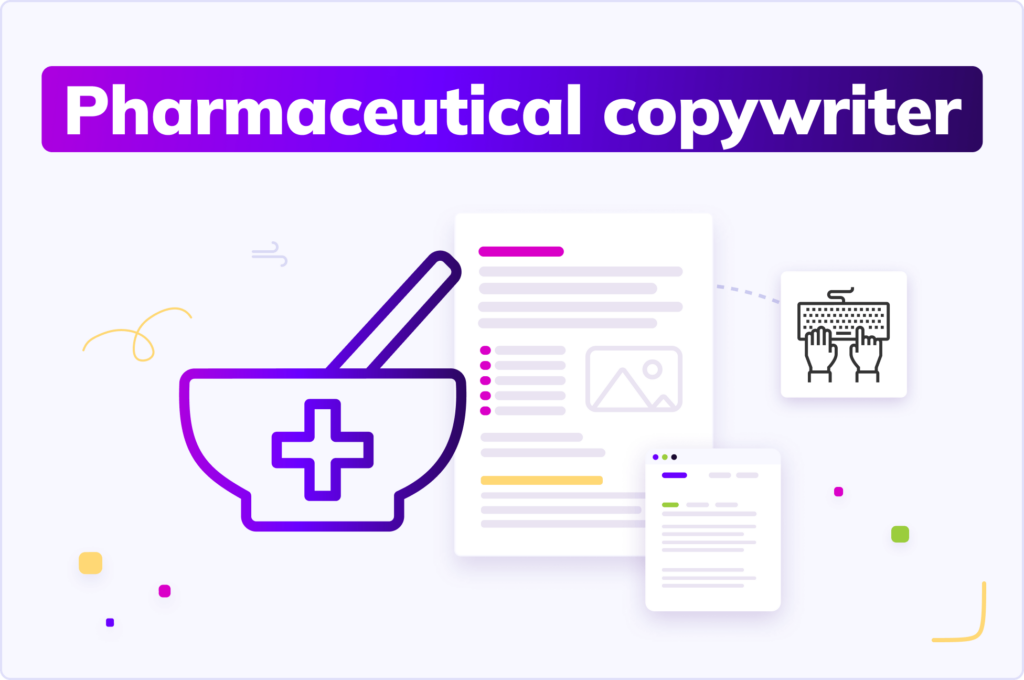
Welcome aboard! Suppose you’ve wondered about the intricacies behind those meticulously detailed healthcare brochures or been intrigued by persuasive pharmaceutical advertisements. In that case, you will find this post particularly insightful. We’re diving deep into the world of ‘pharmaceutical copywriting.’ In addition to enlightening you on the essence of this specialized domain, I’ll let you in on some secrets as to how cutting-edge AI services are transforming it. So tighten your seatbelt. We’re set for an exciting exploration!
What is pharmaceutical copywriting?
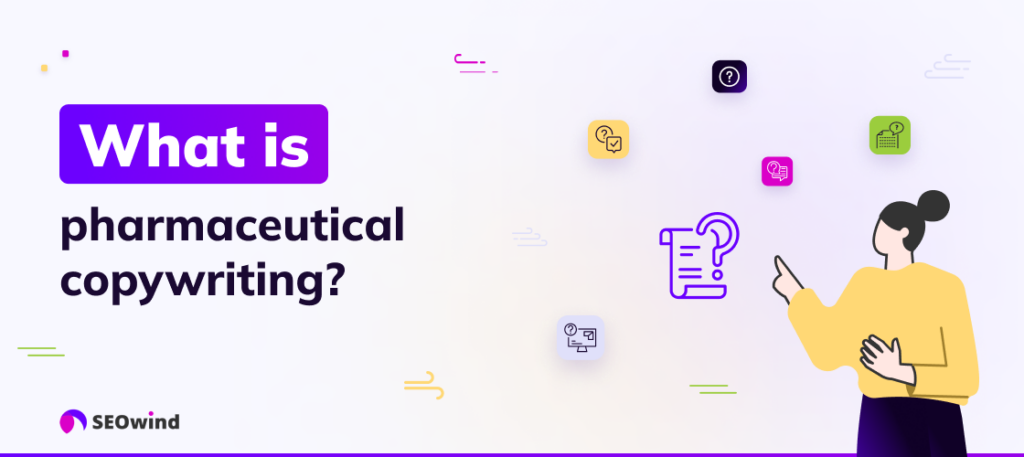
Pharmaceutical copywriting is an intersection of science and the arts, where technical, medical information is translated into readable content for diverse audiences. It’s all about crafting powerful messages that convey the value of a product, service, or brand within the health and pharmaceutical industries.
Imagine explaining a complex drug’s mechanism without bending under the weighty scientific jargon. That’s what a pharmaceutical copywriter does! They navigate through dense terrains of scientific complexity to forge clear paths using relatable language that appeals to health professionals and consumers with various levels of health literacy.
Essentially, pharmaceutical copywriters bridge gaps between medicine and marketing with their vivid storytelling skills embedded in clinical correctness. Whether they’re composing informative patient leaflets, persuasive sales materials, or engaging digital content strategies, they inject life into insipid scientific texts, transforming them into accessible content consumed readily across various channels.
What does a pharmaceutical copywriter do? Typical responsibilities
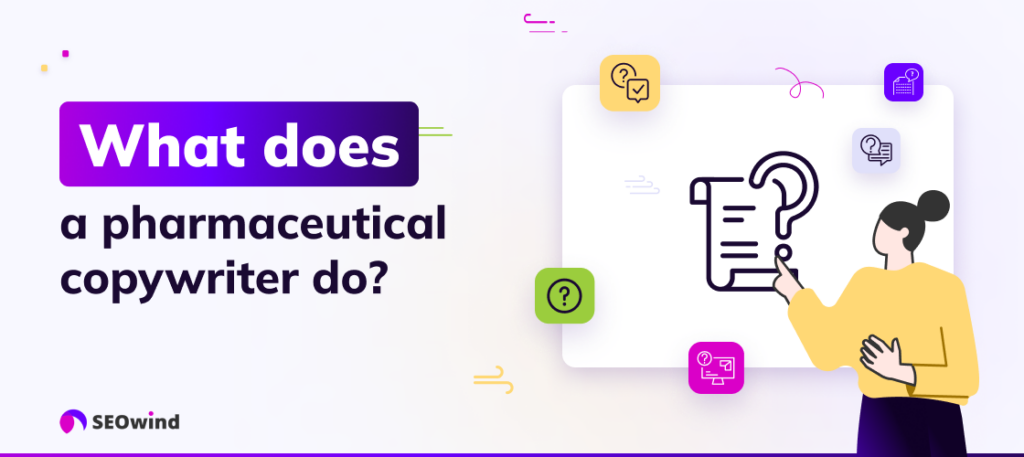
A pharmaceutical copywriter connects the technical world of medical science with everyday language everyone can understand. With a well-grounded understanding of healthcare and therapeutic areas, these talented individuals harness their expertise to articulate complex scientific data into relatable, engaging content.
The typical responsibilities of a pharmaceutical copywriter hinge on the following:
- Translating Medical Information: A key role involves deciphering intricate medical terminology and concepts into digestible information for varied audiences. This might include patients, physicians, or even potential customers.
- Crafting Marketing Content: They are responsible for creating persuasive advertising and promotional materials for drugs or medical devices. The goal is to convincingly present health benefits and positive outcomes without overselling or conveying false promises.
- Writing Educational Materials: Pharmaceutical copywriters often produce educational materials like articles, brochures, and newsletters that target healthcare professionals and the general public. These materials serve as an essential tool in building awareness about new treatments or breakthroughs in pharmaceutical research.
- Liaising with Regulatory Bodies: All published material must align with regulations set by health authorities such as the FDA (Food & Drug Administration). Therefore, navigating the compliance landscape is integral to this job profile.
- Collaboration & Teamwork: A pharmaceutical copywriter often functions within multi-disciplinary teams and collaborates closely with clinicians, researchers, graphic designers, marketing managers, etc., to communicate coherently across various platforms.
Essentially, a pharmaceutical copywriter wears multiple hats – they’re educators and marketers rolled into one while ensuring ethical sensibility and regulatory compliance remain imperative!
So next time you read about a promising new drug or find yourself moved by an advertisement urging you to address your health issue – remember there’s likely a skilled pharmaceutical copywriter behind those compelling words!
Who can benefit from pharmaceutical copywriting?
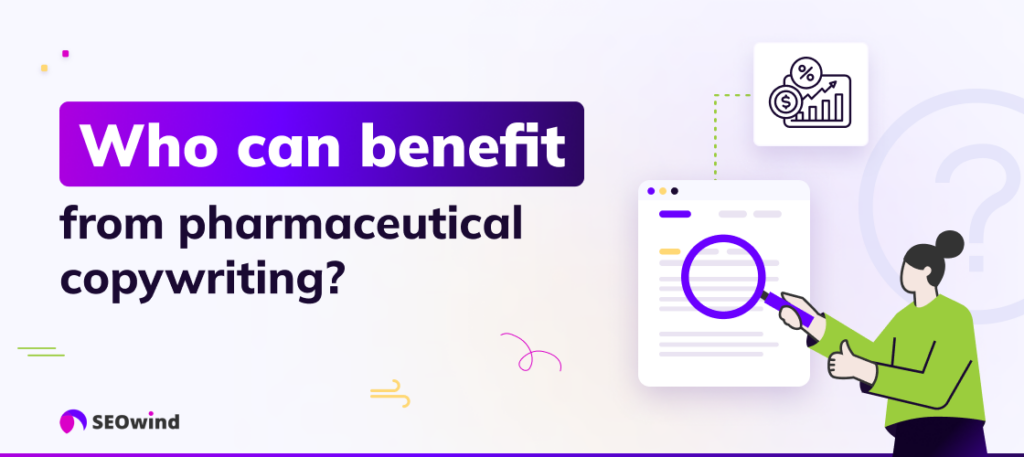
Who has the most to gain from hiring or becoming a pharmaceutical copywriter? The simple answer is almost everyone in the medical and healthcare industry. Now, let me explain exactly why.
Pharmaceutical companies
For starters, pharmaceutical companies are at the top of this list. These companies produce an array of drugs, remedies, and health products that require detailed descriptions, instruction manuals, product literature, and marketing content – all of which must be highly accurate yet clear and easy to understand. Who better than a skilled pharmaceutical copywriter to craft such delicate content?
Healthcare providers
Moreover, healthcare providers like clinics and hospitals also need this valuable service. They often need educational material aimed at patients that explain complex medical conditions or treatment options in layman’s terms. Also, consider their need for website content, patient guides, and newsletters; a good pharmaceutical copywriter can work wonders here.
Medical research institutions also stand to benefit immensely. Cutting-edge medical research needs more than scholarly articles confined to academic journals; it needs outreach via blogs, popular science articles, and press releases—written by professional pharmaceutical writers.
Pharmacies
Let’s not forget pharmacies, either. They sell medications over the counter while providing consulting services. Thus, they need brochures and online content explaining drug use to uphold their brand reputation effectively.
Online businesses covering health topics
Finally, any online medium focusing on health topics will also benefit from well-crafted articles that keep their readership interested while maintaining factual accuracy.
- Pharmaceutical Companies
- Healthcare Providers
- Medical Research Institutions
- Pharmacies
- Online Health Mediums
So there you have it! Pharma copywriting serves a broad spectrum of stakeholders within the healthcare industry, making medicines safer—one leaflet at a time!
How can AI support pharmaceutical copywriters?
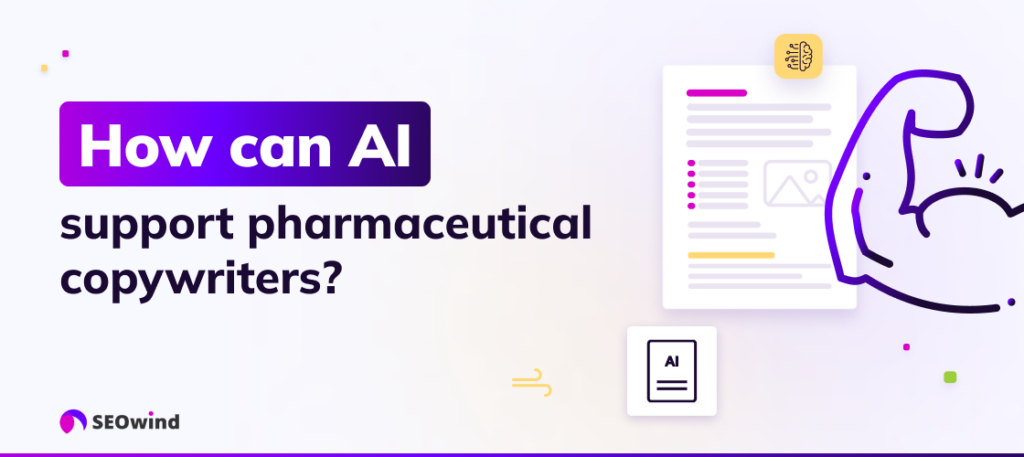
Artificial intelligence is making significant strides in various industries, and pharmaceutical copywriting is no exception. Intelligent systems’ capabilities well meet the intricate and complex nature of this form of writing.
In-depth content research
One way AI supports pharmaceutical copywriters is by performing in-depth content research. Research plays a pivotal role – roughly 90% – in crafting informative, engaging, and reliable pharmaceutical content; thus, having AI tools to tackle this labor-intensive task can be immensely beneficial. These advanced systems delve into relevant databases, academic articles, and pertinent information piles to extract necessary data. This expedites the process and contributes to more comprehensive written materials.
Another advantage of using AI for pharmaceutical copywriting is its smart prompting abilities. As a knowledgeable assistant, it offers guidance throughout writing by suggesting potential topics or angles that might have been overlooked. It’s somewhat akin to having your personal brainstorming partner!
Writing SEO-optimized articles
Moreover, employing AI tools results in SEO-optimized articles. Visibility is integral in reaching larger audiences and boosting engagement rates. With algorithm-friendly content delivered by these intelligent gadgets, more people searching for related keywords will have access to your work online.
Unique article creation
Unique article creation is another feather added to an AI system’s hat supporting pharma writers. Using pattern recognition technologies coupled with machine learning algorithms helps produce distinctive pieces each time, no matter how similar the key phrases might seem.
Lastly, leveraging such advanced tech explicitly designed for content creation allows users to focus on their areas of expertise rather than worrying about technical parts like keyword density or semantic indexing.
In short, entities like SEOwind set themselves apart by integrating intensive content research methodologies with comprehensible outlines assisted by SEO tactics and Artificial Intelligence. They do all the heavy lifting, so you won’t have to!
So imagine having an astute sidekick who’d apply all these methods skillfully while you focus on wielding your writing prowess. That’s how AI working in harmony with a pharmaceutical copywriter looks! It’s an empowering tool, allowing better focus, broader research horizons, increased visibility, and more engaging content.
How SEOwind helps with pharmaceutical copywriting
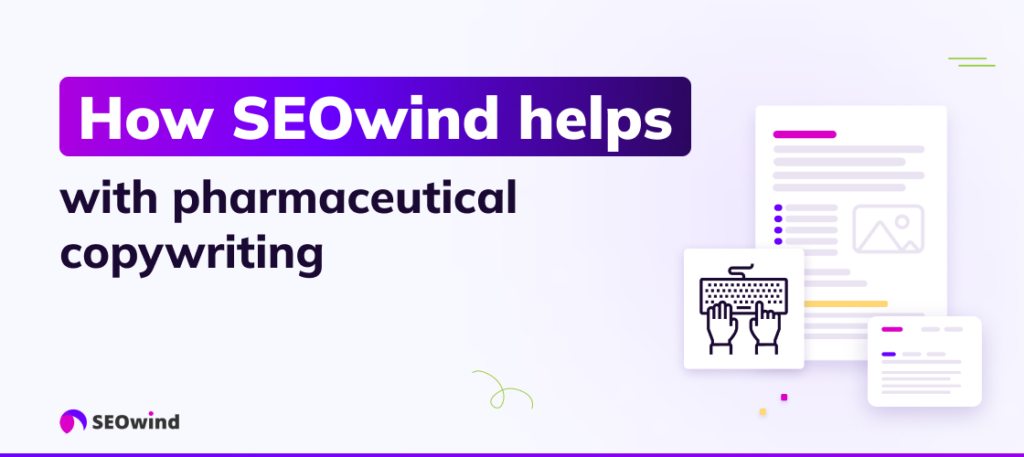
Quality content and accurate communication are paramount in pharmaceutical copywriting. To help companies achieve these objectives seamlessly, SEOwind has emerged as a reliable partner. Let’s dive into how it accentuates your online presence through increased traffic, boosted conversions, and coherent branding.
Increase Traffic
Leveraging advanced AI mechanisms and robust SEO principles, SEOwind drives targeted traffic to your website or blog posts. It conducts extensive keyword and search intent analysis while composing high-quality content. These elements work in unison to propel your website higher in the search engine rankings, attracting more organic visitors with an active interest in pharmaceutical topics.
Moreover, seamlessly integrating relevant statistics and quotes enriches the content’s perception. It contributes positively towards engaging users longer on each webpage. This reduced bounce rate naturally elevates your website’s position amongst peers while consistently inviting valuable traffic.
Boost Conversions
Unlike aggregating views, conversion is about inciting readers to engage with the call-to-action (CTA). Whether it involves buying a product or subscribing to a newsletter, switching from visitor to customer can often be tricky.
SEOwind understands this predicament well. It employs precise language patterns and strategically places CTAs that compel prospects to act when reading information-rich articles. By implementing varying degrees of subtlety within the persuasive undertones meticulously written for pharma-specific audiences, it effectively stimulates readers into becoming customers.
Such high-caliber copy not only drives generic traffic but also attracts those genuinely seeking the solutions it provides, ultimately leading to dramatically uplifted conversion rates.
Keeping Branding Coherent
In any industry- particularly one as exacting as pharmaceuticals- consistency matters considerably concerning branding tones and themes across all communication platforms.
Sometimes, many creators collectively contribute to writing copies for various uses, ranging from product descriptions and social media posts to long-format articles and blogs. This situation poses a risk of diluting the brand’s voice and essential message through varying writing styles that do not quite resonate as one coherent unit.
SEOwind eradicates this potential issue by maintaining a high level of consistent branding. It achieves this remarkable feat through programmed algorithms that understand your preferred tone of voice and all requisite company information. Armed with these details, SEOwind creates content, ensuring every word aligns seamlessly with your defined branding guidelines while promoting active engagement from your readers.
Pharmaceutical copywriting is an area where precision meets creativity. SEOwind plays its strongest game at this critical intersection, unifying technology with human-like content-generating abilities to promote elevated traffic and boosted conversions while keeping your unique branding intact.
SEOwind features that help pharmaceutical copywriting
Pharmaceutical copywriting, inherently complex with its specific terminologies and regulatory compliance needs, can be significantly enhanced using proficient services like SEOwind. This platform uses automation to offer unique features that cover the full spectrum of requirements, pivotal in augmenting productivity, scalability, and quality of content.
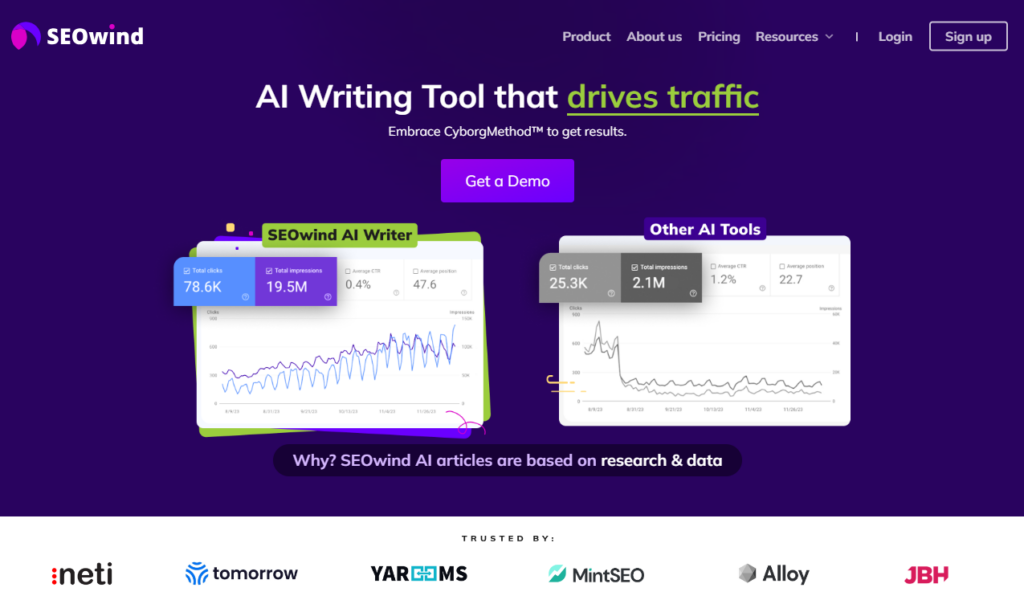
High-quality AI articles and blog posts
SEOwind’s technology injects a blend of artificial intelligence (AI) and human skill into your pharmaceutical copywriting process—effects that are evident when you read one of its high-quality AI-generated articles or blog posts. Constructed around comprehensive SEO data and research, each piece is structured like an absorbing narrative and optimized precisely for search engine performance. The result is engaging content that balances between conveying complex medical information effortlessly while standing firm in satisfying intricate search algorithms.
In-depth content research & Search intent analysis
One of the standout features of SEOwind is its commitment to providing detailed content research and deciphering search intent before crafting any piece. Well-founded on tons of industry-specific data-driven by SEO practices, this assures the relevance of your content in two primary ways: First, it aligns seamlessly with trending keywords users actively look for. Second, it nails every potential angle, ensuring all user queries are sufficiently answered within the text.
Stats and quotes enrichment
The credibility aspect is quintessential more than ever in pharmaceutical copywriting, as stakeholders have become exceedingly discerning, thus favoring evidence-based communication methods. Gratefully, SEOwind automatically adds pertinent statistics and informative citations to your crafted pieces, enhancing authority and infusing them with objectivity.
Internal links added
Internal linking has proven crucial for establishing site architecture and enhancing visitors’ navigability. Integrated directly with your Google Search Console (GSC), SEOwind systematically optimizes this process through clever backlinking, facilitating improved user engagement and indirectly boosting your SEO ranking.
Your insights and expertise
To address concerns that often plague content automation — lack of originality and distinct tone — SEOwind incorporates unique features such as the ability to feed the AI with your individual perspectives and nuanced knowledge. By doing this, articles created emanate an authenticity unmistakably recognizable as yours, all the while soundly resonating with your brand’s voice.
SEO-optimized content
Inevitably rooted across all these features is SEOwind’s in-depth understanding of ‘search engine optimization.’ Content produced via their long-form AI Writer is optimized for search engine performance. Using foundational SEO practices aware of what pages rank better, incorporating user questions tactically within articles, and generating ideas swiftly through automated outlines, every single facet works seamlessly towards making your pharmaceutical copywriting efforts fruitful.

Where pharmaceutical copywriters make an impact
It would be reductive to think that pharmaceutical copywriters are confined to crafting promotional material. They function as key players in the healthcare industry, wielding their pen (or keyboard) to influence numerous areas profoundly. Two pivotal domains where pharmaceutical copywriters significantly contribute are Educating Physicians and Patients and Marketing Healthcare Products.
Educating Physicians and Patients
Imagine your favorite novel or a well-written informative article that kept you engaged until the end. I understand that similar skillful storytelling is required when educating physicians and patients about complex medical concepts. Pharmaceutical copywriters often become bridge builders, translating intricate jargon into usable information.
Remember, knowledge is powerful only when properly understood. Poorly explained procedures or treatments may lead to misuse or anxiety among the users. A skilled pharmaceutical copywriter can convert hard-to-digest scientific data into comprehensible write-ups for varied audiences, from high-level clinicians to laypeople seeking health information.
A top-notch pharmaceutical copywriter gifts understanding by weaving narratives around otherwise obscure facts. This helps doctors better comprehend new drugs on the market and enables patients to become active participants in their care journey.
Marketing Healthcare Products
Entering marketing territory might seem like stepping away from education-focused writing, but contrary to this perception, both remain interconnected at their core. Here’s how: Even while composing promotional content to sell a drug or service, if what I craft does not educate my reader about its benefits and potential risks, am I doing justice? That’s why adhering to marketing ethics becomes crucial.
When it comes to marketing healthcare products brilliantly, Pharmaceutical copywriters must balance persuasiveness with transparency. Not only do they need sparkling creativity for attention-grabbing headlines and stimulating calls to action, but they also bear the responsibility of representing truth accurately without false promises.
A resourceful pharmaceutical copywriter can greatly enhance product visibility and credibility by showcasing product advantages over competitors using compelling storylines or creating vivid narratives around patient testimonials. The ultimate result? An informed audience making conscious choices leads to higher sales of healthcare products.
In the end, the impact of a competent pharmaceutical copywriter is manifold. They are educators and marketers seamlessly blending science with stories – shaping health outcomes one word at a time!
Types of pharmaceutical content that convert
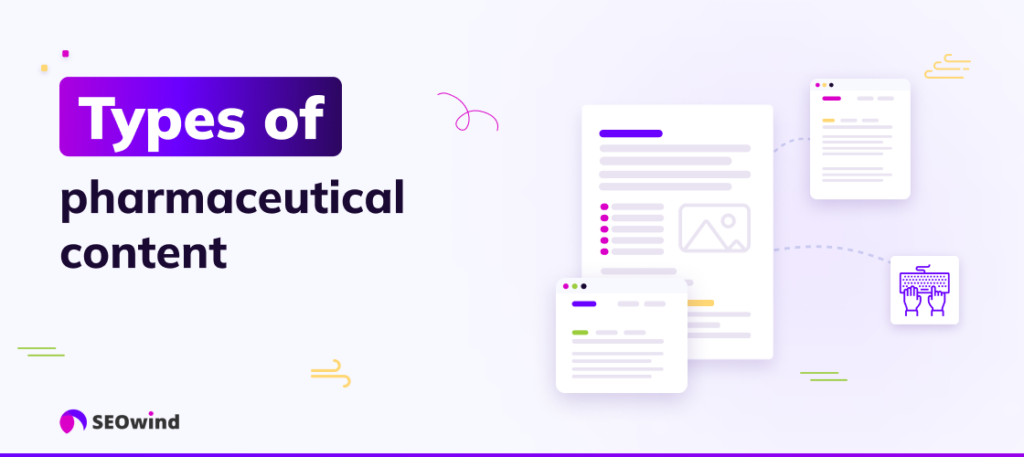
Various content formats can bring value to your pharmaceutical company and its audience. You’ll find that some types perform uniquely well, driving significant conversion rates. I’m here to share insights into these high-performing categories, allowing you to leverage their strengths for the attainment of your marketing goals.
Crafting Persuasive Sales Materials for Pharmaceuticals
Excellent pharmaceutical copywriters understand that selling in this industry differs from other sectors due to the sensitivities involved. The merging point, where scientific accuracy is touched with persuasive language, offers the most compelling sales materials.
- Product Brochures: These catalog-style documents provide detailed overviews of drug products, often featuring visual diagrams alongside important data.
- Sales Letters: These direct-marketing pieces directly target prescribers or pharmacies, focusing on product benefits and key scientific findings.
- Slideshows for Detailing: A well-crafted slide deck is primarily meant for sales teams during presentations. It presents strong visuals accompanied by sharply written captions.
Developing Informative and Engaging Patient Education Materials
Empowering patients with valuable information about their medications and conditions has never been more critical in our knowledge-driven era. Incorporating engaging elements into these materials aids comprehension and boosts patient adherence.
- Patient Information Leaflets: A leaflet containing medication instructions, potential side effects, and other essential details catered specifically toward non-medical readers can be immensely helpful.
- Digital Interactive Content: Educate through animated videos, infographics, or quizzes designed around a particular disease state or medication usage instruction.
Writing Detailed Drug Information Leaflets and Labels
Accuracy is paramount when constructing leaflets carrying detailed drug information or writing labels on packaging—there is no sugar-coating involved. The mandatory disclosure requirement enforced by regulatory authorities makes it crucial to clearly convey all necessary details, even if adverse ones exist.
Key components to focus on:
- Indication
- Dosage and administration
- Contraindications
- Warnings and precautions
Video Scripts, Blog Posts, and Long-form Articles
Delving beneath the surface of a drug or disease can be best served in long-form content pieces like blog posts or extended articles.
- Video Scripts: Communicate complex subjects effortlessly through explainer videos that simplify difficult information, such as explaining how a new drug’s mechanism of action works.
- Blogs & Features: Blogs build patient trust, while feature-length articles lend credibility to your pharmaceutical brand amongst professionals.
Product Descriptions and Digital Content Strategies
Engaging product descriptions shapes your online presence significantly. They not only inform visitors but also encourage purchase decisions. Combine these with an effective digital content strategy to keep content consistent and purposeful across different platforms.
Parsing heavy data into easily understandable bites allows search engines to find you more readily while planning regular content updates, which keeps visitors returning for more.
Whether crafting persuasive sales materials, creating informative patient education materials, developing detailed leaflets or labels for drugs, writing video scripts or blog posts, or designing digital strategies, remember that clear communication is king in pharmaceutical copywriting. Your goal must always be to bridge the gap between science and understanding without crossing any ethical lines of misleading promotional efforts.
The art of simplifying complex information
Regarding pharmaceutical copywriting, one of the most admirable skills you can possess is translating complex medical information into a comprehensible language for a wider audience. Indeed, the main challenge lies in breaking down dense and often difficult-to-understand concepts without losing their core essence or accuracy.
Best Practices for Breaking Down Medical Jargon
As a pharmaceutical copywriter, your role involves demystifying esoteric medical jargon for various audience types, like doctors, pharmacists, patients, and laypeople who may have little background knowledge on certain topics.
- Understand before you write: Prioritize understanding the subject matter thoroughly before attempting to put pen to paper. Comprehensive research aids in explaining these terms correctly and in context.
- Substitute simpler words: Replace jargon with common equivalents that don’t water down the meaning.
- Use metaphors wisely: Employing analogies or metaphors can be an excellent method to illuminate complicated theories or procedures while keeping the reader engaged.
- Add explanations: Provide clear definitions or elaborations when introducing technical terminologies that cannot be avoided.
Remember, clarity should always take precedence over cleverness while ensuring the integrity of information remains intact.
Techniques for Making Complex Data Accessible
Medical writing often involves dealing with intricate data from clinical studies or research findings, which need to be shaped into comprehensible content not only for healthcare professionals but also for patients or consumers looking to understand specific health-related issues more accurately.
- Visualize data: Visual representations such as charts, infographics, or diagrams can make complex statistics much easier to digest.
- Cite relatable scenarios: To make abstract numbers more tangible, contextualize them within real-life situations.
- Break down big numbers: Instead of presenting large figures upfront, which may seem overwhelming at first glance, break them down into smaller, manageable parts.
- Use comparisons: A direct comparison with familiar items or situations can help illustrate the impact or extent of a certain data point.
By making complex data more accessible, you contribute to increased understanding and foster informed decision-making among your readers, bolstering their trust in what they read. Remember that this skill isn’t just about translating facts and figures into simple terms; it’s about amplifying comprehension through refinement of information delivery.
Regulatory considerations in pharmaceutical copywriting
Complying with regulatory guidelines is not just an option—it’s a necessity in pharmaceutical copywriting. As a pharmaceutical copywriter, you don’t merely transfer knowledge; you must also operate within intricate legal landscapes and ensure that all communicated information conveys accuracy while adhering to ethical norms.
Understanding Compliance with FDA Guidelines
Many of these regulations entail compliance with the Food and Drug Administration (FDA) guidelines. These rules are designed to ensure fairness in drug advertising and promotion by requiring companies to communicate their products’ risks alongside their benefits accurately.
For instance, prescription drug promotional materials should be clear about effectiveness and risk factors. Thus, aligning your content with these tenets becomes pivotal as a pharmaceutical copywriter. Misrepresentation or overstating medicine’s benefits can potentially result in severe repercussions for patient health and the company’s reputation. In this regard, understanding FDA regulations isn’t just necessary for legally compliant writing – it’s paramount for delivering ethically grounded content.
Ensuring Accuracy and Ethical Messaging
Pharmaceutical copywriters are also responsible for maintaining ethical integrity in their messaging, in addition to aligning with regulatory directives. The EMWA Journal states, “Laws, regulations, pharmaceutical industry codes of practice, and other guidelines play an important role in ethical medical communications.”
Accurate depiction of product performance is a hallmark of ethical communication, but it doesn’t end there: It is incumbent upon us as writers to be truthful in all types of content, from articles detailing new studies on drug efficacy to sales material describing medication usage instructions.
One must also balance persuasive marketing efforts with providing unbiased information that benefits patient healthforemost. Unfair exaggeration or concealed data significantly diminishes trustworthiness, making it crucial to strike a balance by presenting transparent, comprehensive information that helps patients make informed decisions.
Indeed, dedicating ourselves to precision and ethics enables us to foster trust in our audiences and ensures our compliance with the regulatory labyrinth we navigate daily as pharmaceutical copywriters. It’s a challenging road that ultimately leads to better patient outcomes — and truly, that’s what matters most.
Bridging marketing and medicine
In the pharmaceutical industry, marketing and medicine must coexist in harmony. A pharmaceutical copywriter’s role is crucial as their interface. They collaborate with scientists to understand complex medical data and transform it into comprehensive and engaging content for different audiences. This requires an adept understanding of both the medical world and the art of persuasive storytelling.
The Role of a Copywriter in Pharmaceutical Branding
A pharmaceutical copywriter essentially defines himself as a conduit between scientific innovation and its consumers. While this may seem like an uphill task, with appropriate skills, pharmaceutical branding can be remarkably effective and rewarding.
Pharmaceutical copywriter’s prime responsibility involves producing informative yet engaging content about your brand’s portfolio—whether we’re discussing groundbreaking medications or cutting-edge healthcare technology. Through clear communication, I strive to instill trust in your products in our audience.
Let me break down my role further:
- Curating essential information: I extract the considerable (and often overwhelming!) volume of relevant information from scientific discoveries linked to your products.
- Crafting captivating content: Once this data is dissected, my job is to weave a compelling narrative around these facts without compromising accuracy—keeping it compliant while maintaining reader interest.
- Target audience focus: Different demographics require different strategies – I adapt my writing style based on your target audience’s preferences.
- Ensuring compliance: Lastly, all content created adheres strictly to regulatory guidelines from the FDA.
In short, a pharmaceutical copywriter ensures that important medical breakthroughs aren’t lost behind intricate terminology. Instead, they reach your potential customers, effectively and ethically bridging medicine to its rightful market, satisfying both product credibility and accessibility goals simultaneously.
Educational background: what you need to become a pharmaceutical copywriter
As with many specialist careers, becoming a highly skilled pharmaceutical copywriter involves comprehensive education and training. Here, we unravel what degrees and certifications could help pave your path and why ongoing learning should be imprinted in your DNA when aspiring to this field.
Degrees and Certifications that Make a Difference
A life sciences or pharmacy degree can lay a strong foundation for those looking to become pharmaceutical copywriters. Studying biochemistry, pharmacology, or biology will give you sweeping knowledge of complex medical terminologies and concepts.
However, expertise in science alone doesn’t cut it in this field. You should also have superb writing skills – understanding persuasive writing techniques is particularly valuable. Some pharmaceutical copywriters might hold degrees in communication or journalism as well.
Solidifying your credentials further with specific certifications can skyrocket your competence, too! For instance:
- Medical Writing Certification Commission (MWCC): A certification from MWCC only amplifies your credibility as a qualified professional writer in the biomedical arena.
- American Medical Writers Association (AMWA) Essential Skills Certificate: Bagging this certificate underscores your proficiency in transforming intricate health-related information into understandable language for various audiences.
Remember that while these qualifications stick out on your resume, like shining badges of honor, they aren’t strictly mandatory across jobs. Having good direct experience sometimes may outweigh formal education.
The Importance of Ongoing Learning in Pharma
Just as scientific research keeps moving forward without hitting pause even for a microsecond, so does the necessity for continuous learning if you aim to shine as a pharmaceutical copywriter. After all, today’s breakthrough discovery could be tomorrow’s outdated finding!
Ongoing learning comes through various modes:
- Regular workshops and webinars: These platforms offer updated insights into recent advancements within pharma and tips on incorporating these findings into your writing.
- Online courses and certifications: Many institutions provide short-term, specific courses to enhance general and advanced medical writing skills. Adding these to your learning repertoire will keep you relevant in the marketplace.
- Subscriptions to pharmaceutical publications and news: Staying informed about industry trends can give you a unique edge when crafting persuasive copy. It also allows you to speak knowledgeably on topics of interest to your target audience.
As with most fields, education is an ongoing journey. The compelling field of pharmaceutical copywriting is no exception!
Questions on pharmaceutical copywriting
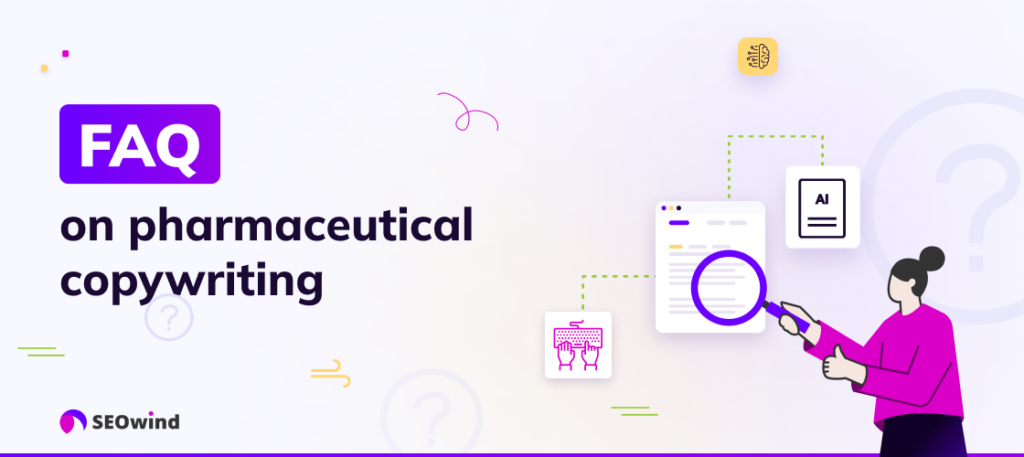
In pharmaceutical copywriting, hopeful beginners and seasoned veterans alike often ask numerous questions. I’ve curated some frequently posed inquiries to illuminate these common curiosities.
How do I become a pharma copywriter?
Becoming a pharmaceutical copywriter is no menial task. It requires several steps. Here is what you need to know:
- Education: A background in life sciences can be beneficial. Most commonly, people with degrees in pharmacy, biotechnology, or related fields venture into this domain.
- Experience & Skills: Initiate your journey by writing within the confines of medical science-based topics or for healthcare facilities. Developing an understanding of scientific concepts and complex terminologies is essential.
- Certification Course: Several universities and organizations offer courses specific to healthcare or pharmaceutical marketing, which could greatly supplement your skill set.
- Build Portfolio: Create samples tailored for the pharmaceutical industry. They are critical in showcasing your abilities!
- Network: Attend conferences/ webinars related to health and wellness and connect with professionals in this area. These actions help develop relationships that might open doors.
Remember that persistence is key here. A steady progression will eventually lead you there!
Can a pharmacist be a great copywriter?
Absolutely! A pharmacist already possesses a profound knowledge of medicine, treatment protocols, and drug compositions, the intimate details that form the essence of pharmaceutical copywriting.
However, clinical expertise alone does not guarantee success as a copywriter—having a flair for language and robust communication skills elevates those chances significantly. Understanding both the medicinal part and its persuasive presentation helps create compelling content that resonates with readers, convincing them about the benefits of a particular product or service.
Moreover, pharmacists also comprehend patient needs firsthand—this insight aids in crafting more patient-centric materials—an invaluable trait within this industry.
Therefore, merging their medical acumen with adept copywriting skills could make pharmacists excellent pharmaceutical copywriters.
I want to switch out of pharma copywriting… is it hard?
Transitioning to a different industry from pharmaceutical copywriting, like any significant career change, brings challenges and demands carefully considered decisions. It’s about reshaping your repertoire for different audiences while keeping the essence of writing compelling content.
With an already established base in technical writing, transitioning into industries that demand similar skill sets might be smoother. An ideal role would be one where complex technical information needs simplifying, such as in the technology or finance sectors.
However, entering domains like fashion or culinary arts may necessitate honing more creative styles—an exciting journey but perhaps a steeper learning curve.
Always remember—the key lies in flexibility and your eagerness to learn!
How do you navigate writing for pharma?
Surfing through the waves of pharmaceutical writing efficiently requires mastering certain techniques:
- Fathom Your Audience: Unveiling their preferences can guide your tone—technical jargon for professionals or layman’s terms for the general public.
- Understand Compliance Policies: Regulatory bodies have strict guidelines regarding promoting medicines and ensuring ethical marketing practices. In-depth knowledge about these rules is crucial.
- Develop Clear Messaging: Complex information should be written with utmost clarity, setting aside ambiguities. Simple language best illustrates this.
- SEO Skills- A Must: Adeptness of SEO helps rank your content higher in search results
Remember, as you swim through these currents, effectiveness lies not just in the science but also in the art—and avant-gardism comes only with continuous practice!